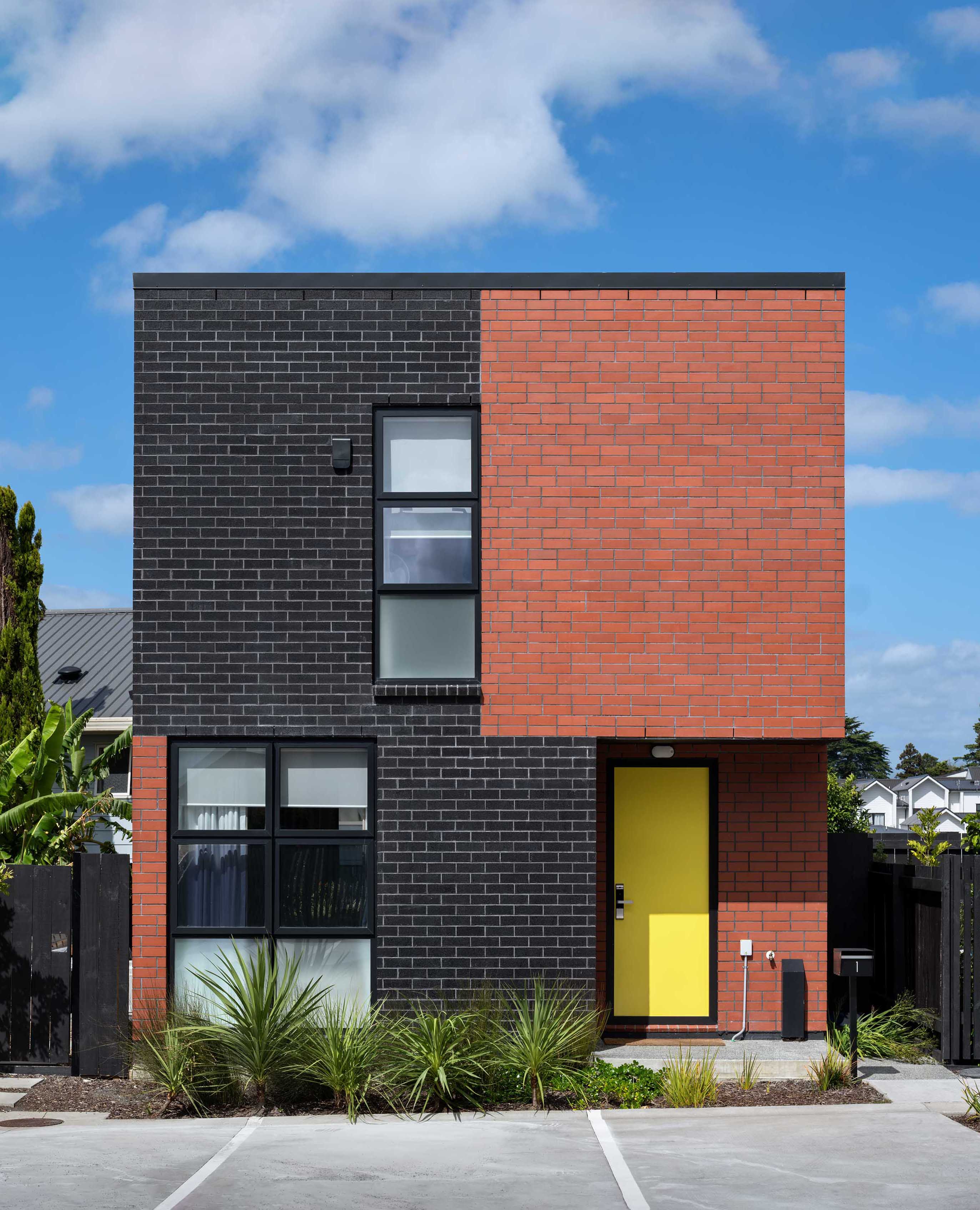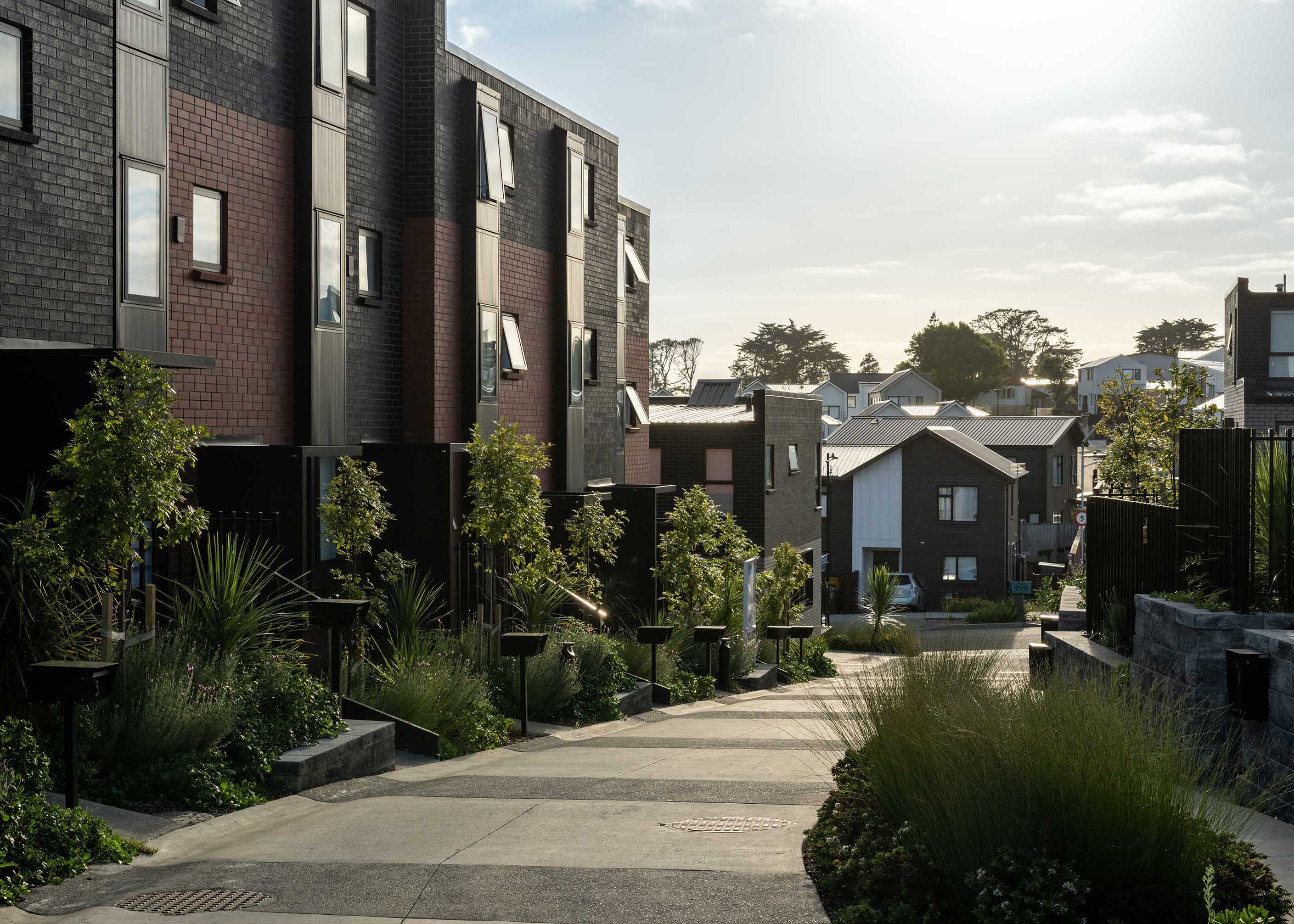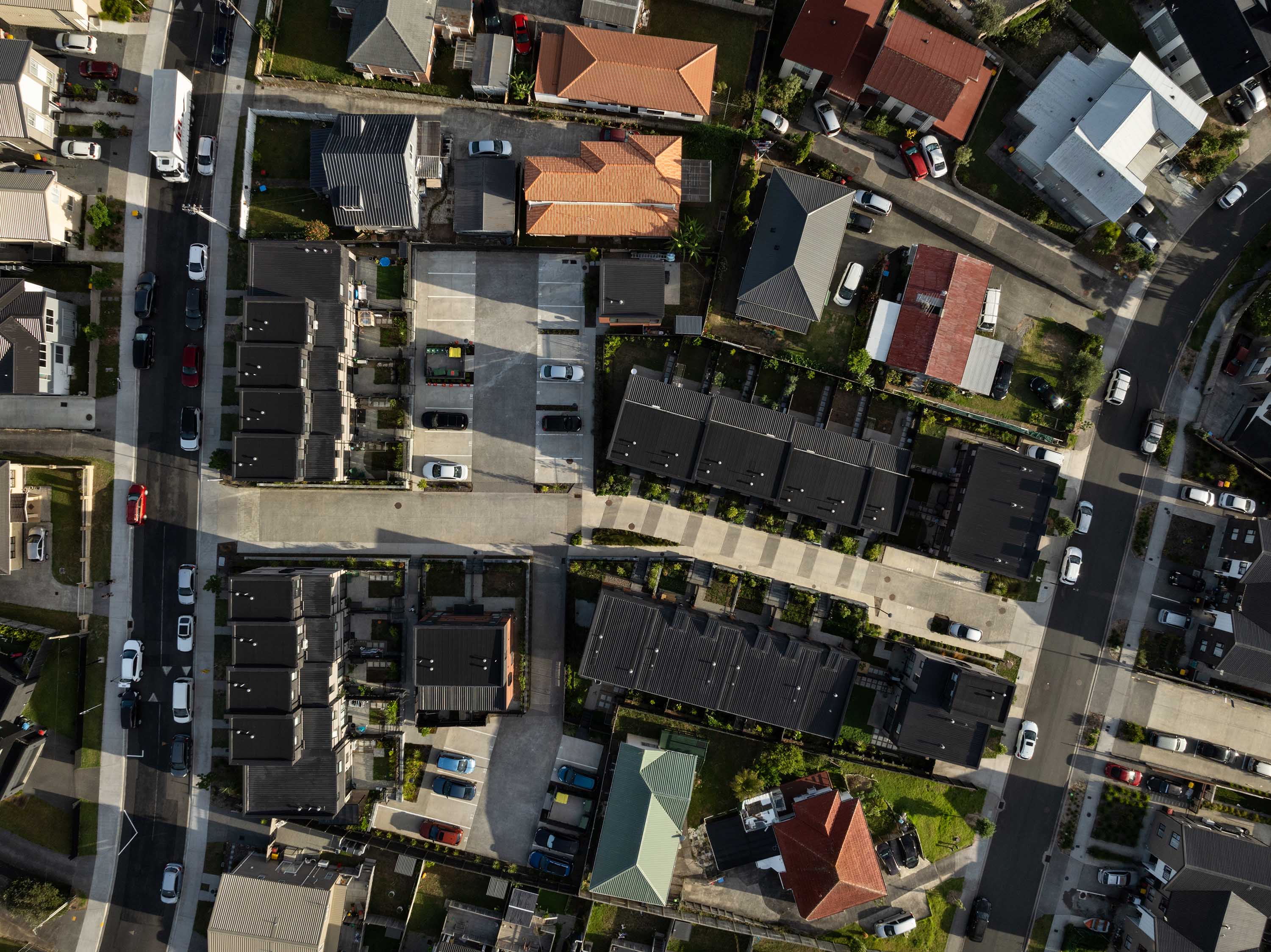

Puketāpapa Mount Roskill is a sacred maunga to the people of Te Ākitai Waiohua. Once a thriving pā site, the mountain and its fertile surroundings were occupied and cultivated by the iwi for generations. Crosson Architects uncovered traces of that rich history during design for this new multi-unit development at the base of the mountain. “There was stratification in the geology,” recalls architect Ken Crosson. “Above the usual layers of volcanic rock and soil, you could see how Māori once gardened here – how they burned vegetation and created ash beds to fertilise the land.”
The development was named Te Māra, The Garden, in homage to that legacy of cultivation and renewal. It’s part of a broader revitalisation project underway in Roskill South that will replace about 260 state homes with 920 architecturally designed social and affordable ones. This arm of the project, led by Avant Group in close collaboration with iwi, replaces six standalone Kāinga Ora homes with medium-density, affordable housing designed to foster a sense of community. The masterplan of Te Māra features five micro-neighbourhoods, and this one, Keri, prioritises a sense of place. Orientated around daylight and sightlines to the maunga, its façade echoes the narrative of that layered soil below, binding the history of the land with the architecture itself.
Keri’s 31 townhouses are arranged to “play down the cars and play up the people”, says Crosson. With a mix of two-, three- and four-bedroom homes, they cater to a diverse roster of residents: families, professionals, young and old. All front doors open onto the freshly landscaped streets – much like London’s Victorian townhouses – so owners will often catch an eye or a nod from a neighbour as they duck in or out. A new road slices through the site, connecting two existing streets and creating room for centralised parking lots tucked away behind planting and buildings. The result is a pedestrian-friendly environment that feels safer, greener and more communal.
As with any affordable housing project, the budget was a key driver in the decision-making, so planning efficiencies were imperative. Often, that means creativity takes a hit, but that’s not the case here. “I have to give Avant Group and Te Ākitai credit,” says Crosson. “They were super motivated to do something special, unique and of quality. Ultimately, we were all fighting for the same outcome.” The artful façade, for instance, could have been value-engineered into something simpler and cheaper, but doing so would have compromised the project’s integrity. The brick’s inherent durability also helped seal the deal. “Brick buildings have a sense of permanence. You don’t have to paint or stain them. You don’t have to maintain them. They look good, they feel good, and they’ll be around for a long time,” reasons the architect.
Cost-efficiency came through other moves, such as standardised materials, repetition in design, minimal structural steel, and smart structural systems. These savings meant there was room for some important, elevated moments, like the high stud of the living areas, which brings volume and light to the core of each home. Crosson’s crafty though, achieving this with just a clever stack of standard plasterboard panels. Nothing custom or costly, just thoughtful planning for the win.
Inside, the layout is straightforward and purposeful. Kitchens sit at the front overlooking the street, flowing through to dining and living, and out to private yards. The bedrooms and bathrooms are tucked away upstairs, and while there are always going to be limitations to privacy in a higher-density development, the design and spatial planning work in the tenants’ favour here. Where the front of the homes aim to foster a sense of community, out back it’s about solitude, with minimal overlooking thanks to thoughtful siting.
As part of the area’s broader urban-renewal effort, there has been a push to revitalise local parks, amenities and infrastructure. With Keri, the Crosson team was able to piggyback off the surrounding green spaces, rather than create their own. Along with prioritising the relationship to Puketāpapa, there’s a natural connection to Freeland Reserve, which lies in the centre of the Te Māra neighbourhoods. Once neglected and somewhat sketchy, the park was redeveloped as part of a modern stormwater upgrade to protect the previously flood-prone area. The refreshed wetland is edged by native planting with a network of cycling and walking paths, sculptures and picnic tables. “It’s a real asset to the area, and in the last cyclone, it worked. No issues, no flooding,” says Crosson.
Te Māra shows what’s possible in the realm of multi-residential, affordable housing. Yes, more homes are needed (and fast), but that shouldn’t come at the expense of decent design. People deserve spaces that are well considered, connected to nature and community, and built to last. These townhouses fire on all fronts and, as a result, have attracted the diverse community that Avant Group intended. In fact, Crosson’s own two children each bought one – perhaps the ultimate endorsement.
“I think there’s a risk with higher density that we forget to think about the urban outcomes,” says the architect. “We’ve got to think about the 100-year life of these homes. How do people live in them? How do people maintain them? And how do people become part of a community? Yes, we need more homes, but we also need to add quality into the conversation. Quality space, quality urban planning for a better quality of life.”




